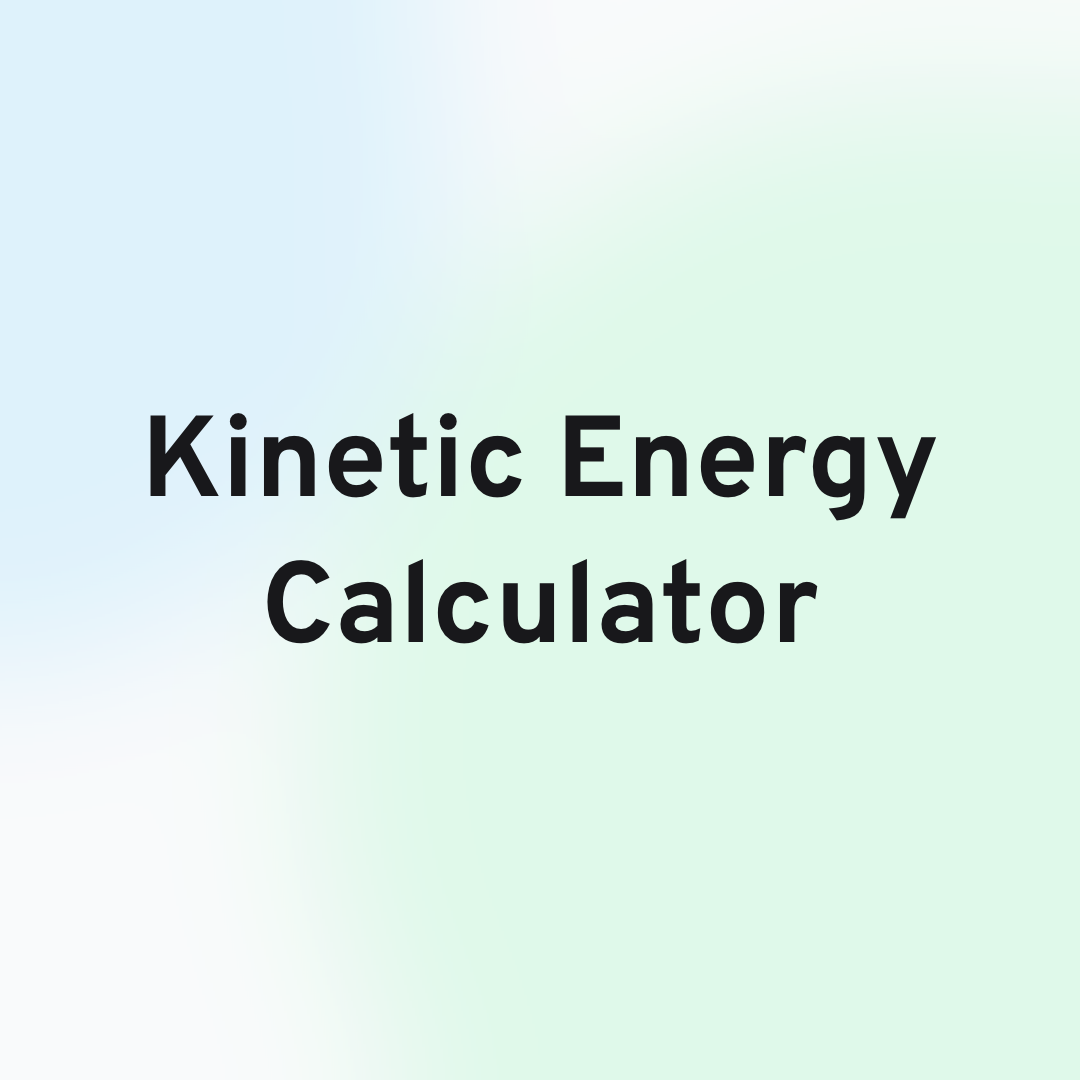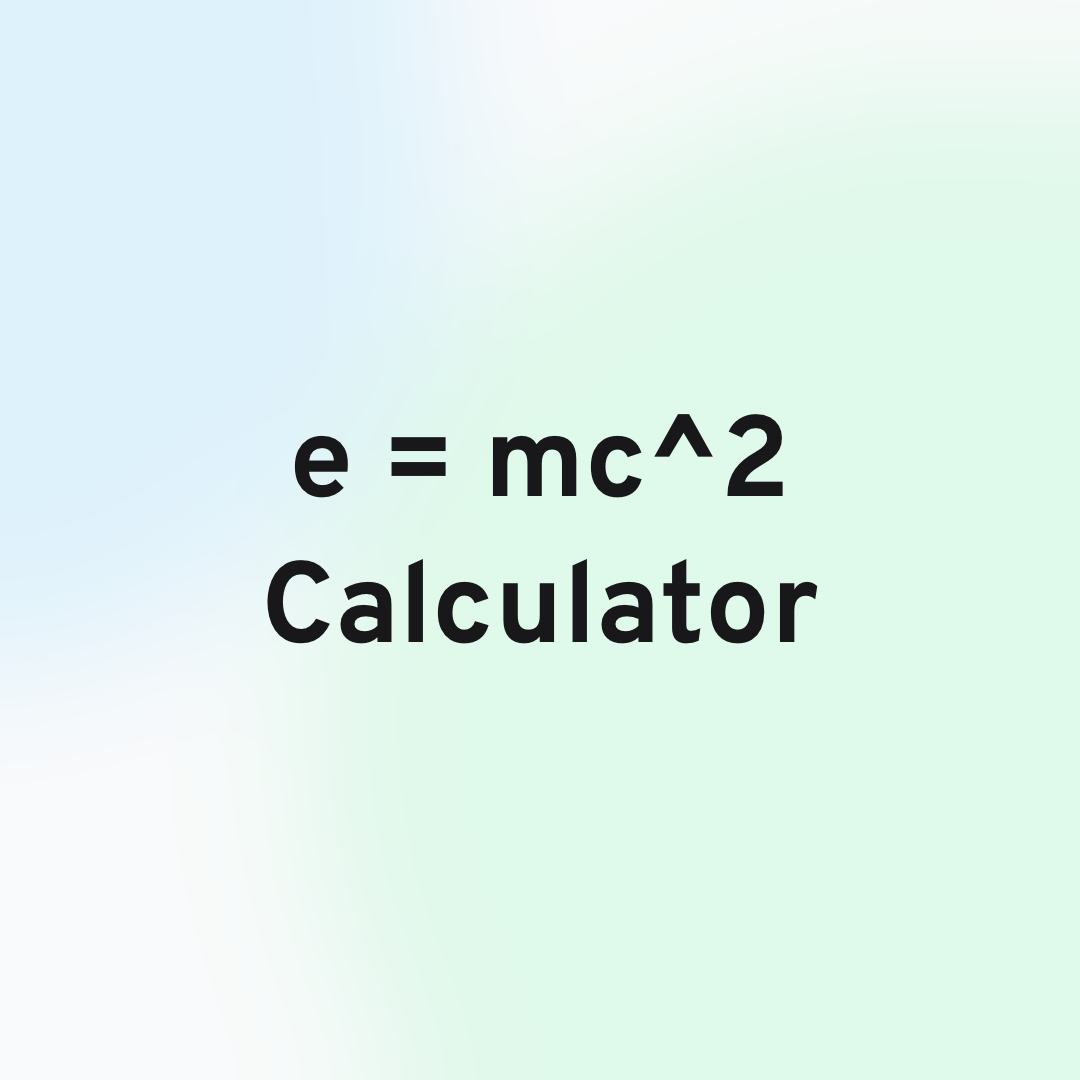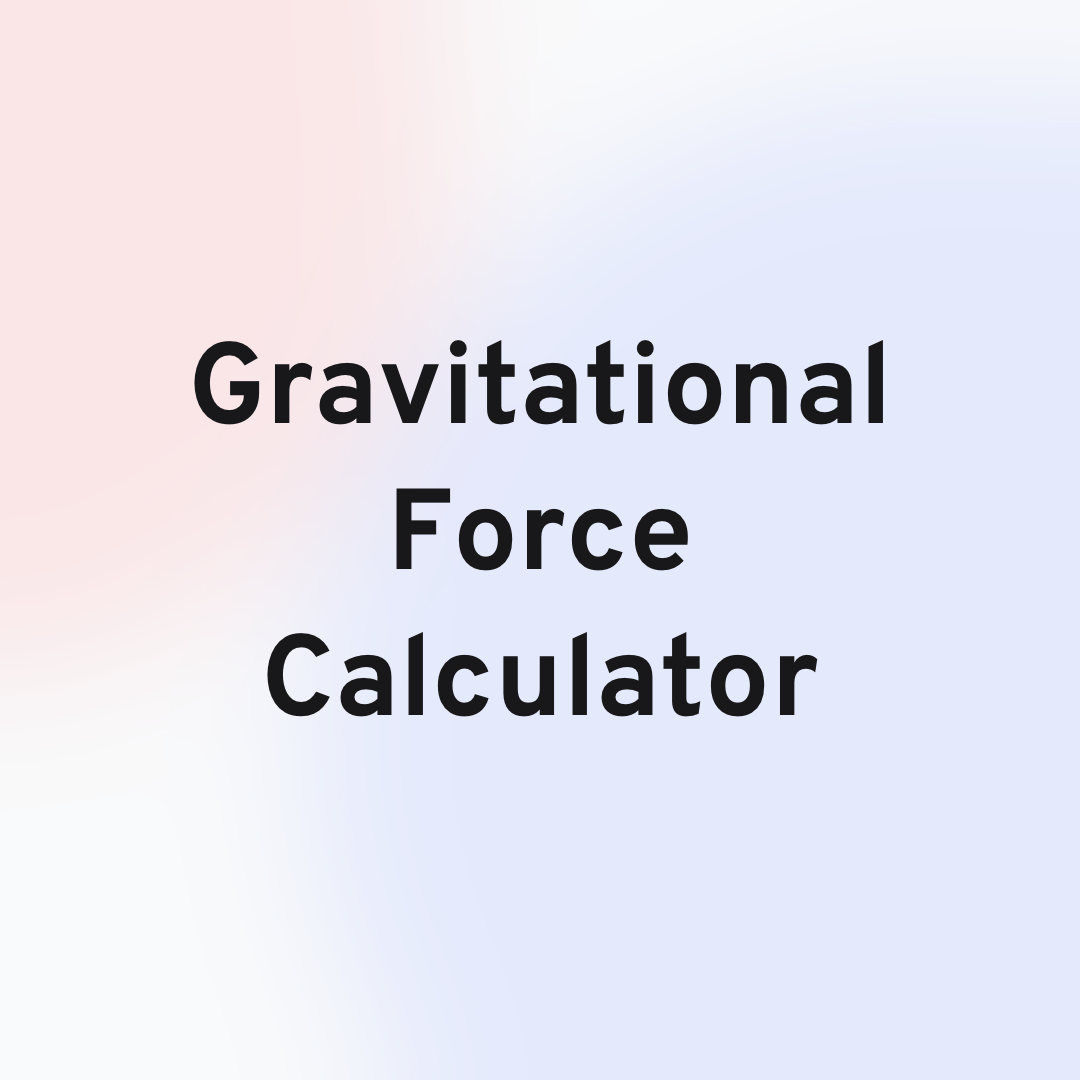
Physics
Mechanics
Work Calculator
Calculate Work Done with our intuitive Work Calculator. Input force and distance to get the amount of Work Done.
Potential energy is stored in a system because of the position of its parts, stresses within itself, or electric charge. Potential energy is a property of a system and not of an individual body. Our Potential Energy Calculator helps you calculate the system’s potential energy easily and quickly.
Kinetic energy is defined as the energy of a moving object. The potential energy of a system is converted to Kinetic Energy if a force is applied or if the system starts to move or fall.
The different types of potential energy include
Using the Potential Energy Calculator, you can calculate the potential energy of the system.
The types of Potential Energy we can calculate are
We can calculate the gravitational potential energy of the system by entering the values of the mass and height of the object.
The variables in the calculator include
Mass (m) The mass of the object
Acceleration due to gravity (g) The acceleration caused due to the influence of gravity
Height (h) The height of the object
Gravitational Potential Energy (PE) The amount of gravitational potential energy is due to the height and weight of the object. The following formula is used.
We can calculate the Elastic Potential Energy of the system by entering the values of the spring’s force constant and the spring’s displacement from compression or elongation.
The variables in the calculator include
Force Constant (k) The measure of the spring’s stiffness
Spring Displacement (x) The amount of stretching or compression of the spring. If spring is compressed, x will be negative; when spring is extended, x is positive.
Elastic Potential Energy (PE) The amount of elastic potential energy due to compression or elongation of the spring can be calculated using the following formula
Potential energy is the energy that is stored in the system depending upon the relative position of the various parts of the system. The potential energy stored can be converted to kinetic energy if the arrangement of the system’s parts changes, if any external force interacts with the system, or if the forces that the parts exert on each other change in some way.
There are multiple forms of potential energy
Gravitational potential energy is calculated by using the following formula
Where,
m → mass of the object
g → acceleration due to gravity
h → height of the object
Elastic potential energy is calculated by using the following formula
Where,
k → Force constant of spring
x → Elongation of spring (spring displacement), x will be positive (> 0) if stretched, x will be negative (< 0) if compressed
Potential energy is the energy an object possesses due to its position or configuration, while kinetic energy is the energy an object possesses due to its motion.
The potential energy of an item is influenced by its mass; the more mass an object has, the more potential energy it possesses.
The energy that an item stores due to pressures brought on by compression or elongation are known as elastic potential energy. When an object is stretched or squeezed, it increases; when it is returned to its original position, it reduces.
The energy that an object has stored in it due to its chemical or atomic makeup is known as chemical potential energy. It is the energy that is released or absorbed during chemical processes.
Potential energy is used in many everyday applications, such as in the operation of hydroelectric power plants, where the potential energy of water stored behind a dam is converted into kinetic energy and used to generate electricity. It is also used in functioning spring-loaded devices, such as mousetraps, and in the charging of batteries, where chemical energy is stored as potential energy.
Yes, potential energy can be converted into kinetic energy and vice versa. This happens when an object is lifted to a higher height. Its potential energy increases, and as it is released, it converts into kinetic energy. Similarly, when an object is lifted and slows down as it reaches its highest point, it converts kinetic energy into potential energy.

Physics
Mechanics
Calculate Work Done with our intuitive Work Calculator. Input force and distance to get the amount of Work Done.

Physics
Mechanics
Calculate kinetic energy with ease using our simple Kinetic Energy Calculator. Input mass and velocity to obtain precise results in a jiffy.

Physics
Mechanics
Our Velocity calculator will help you calculate the object's velocity based on position and time values under constant acceleration.

Physics
Modern Physics
Compute energy from Einstein's famous equation using our e=mc^2 (emc2) calculator. Input the mass and calculate the energy precisely.

Physics
Mechanics
Calculate the force of gravity between objects and understand the interactions between celestials using our Gravitational Force Calculator.

Physics
Mechanics
Precisely calculate acceleration with our nifty Acceleration Calculator. Input initial and final velocities, and time, to obtain the results!